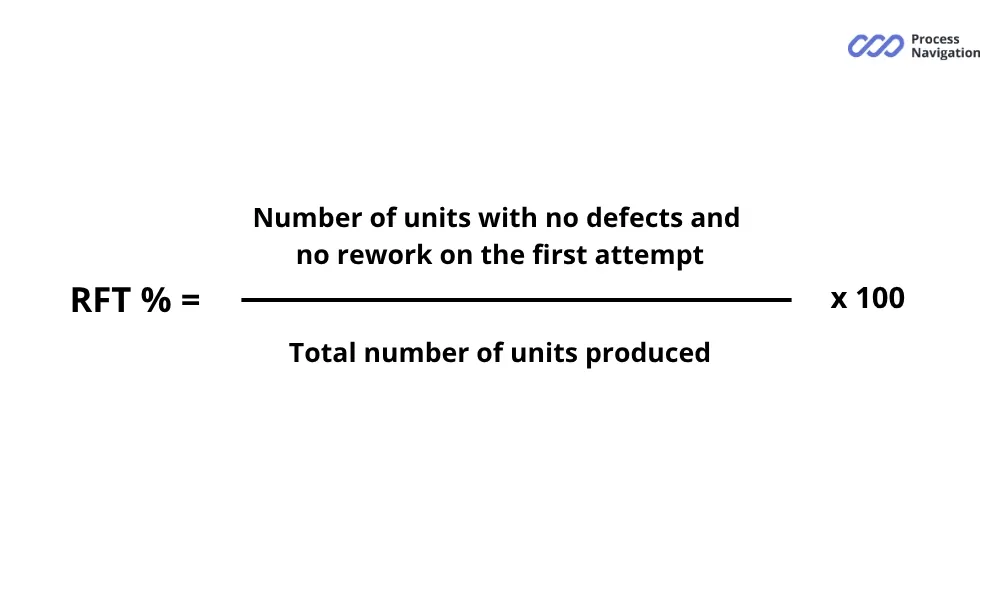In modern business, every mistake costs money. Reworking products, fixing defects, and performing additional checks all eat into profits and slow down production. According to research, companies spend between 15% and 40% of their turnover on remedying the consequences of poor quality. The Right First Time concept was developed in response to these challenges, helping companies achieve excellence at minimal cost.
This method originated in the Japanese automotive industry and became the basis for many modern quality assurance systems. Quality pioneers such as Deming and Juran laid the foundations for understanding that preventing defects is much more effective than correcting them.
In the 1980s, the principles of right first time became widespread in the automotive industry, where the cost of error is particularly high. Toyota, Honda, and Nissan demonstrated how the correct application of RFT can lead to revolutionary changes in quality and production efficiency.
Today, in an era of fierce competition and high customer expectations, the ability to do everything right the first time becomes a key factor for success.
Right First Time: the Definition
Right First Time or First Time Right (FTR) is total quality management (TQM) concept according to which defect prevention is more beneficial and cost-effective than finding them and implementing appropriate fixes. First time right means that every process, product, or service must meet quality requirements from the very start. This is not a coincidence, but the result of careful planning, and continuous improvement of all business processes.
Right first time is radically different from the traditional “make-check-fix” approach. Instead of correcting errors after they are discovered, RFT focuses on creating conditions in which errors simply cannot occur. This is achieved through a systematic approach to planning, process standardization, and continuous training of all staff members.
Main principles of right first time:
- Preventing defects instead of fixing them — a proactive approach to quality.
- Standardizing processes to eliminate variability and human error.
- Training staff in proper work methods and a culture of quality.
- Kaizen — constantly improving all aspects of operations.
- Systematic approach — viewing all processes as an interconnected system.
- Customer focus — understanding and exceeding consumer expectations.
Right First Time Implementation Methods
Right first time manufacturing means producing products that meet quality standards on the first pass through the manufacturing process, without the need for rework or remanufacturing.
1. Lean Six Sigma Approach
Lean Six Sigma combines the principles of lean manufacturing and statistical quality control, creating a powerful methodology for achieving first time right:
- Identification and elimination of all types of waste (7 types of waste according to Lean).
- Reducing process variability to 3.4 defects per million opportunities.
- Defect prevention instead of output quality control.
- Continuous improvement through DMAIC cycles.
- Statistical analysis and data-driven decision making.
- Creating a culture of Kaizen at all levels of the organization.
Six Sigma methodology provides statistical tools to analyze and improve quality throughout the production process, ensuring that tasks are performed correctly from the initial attempt.
2. Digital Work Instructions (DWI)
Modern digital instructions revolutionize the way knowledge is transferred and ensure high-quality execution of operations:
- Step-by-step visual guides with photos and videos.
- Interactive checklists with automatic verification.
- Automatic monitoring of task completion and time.
- Instant updates of procedures across the entire network.
- Multilingual support for international teams.
- Integration with manufacturing execution systems (MES).
When companies introduce visual work instructions, they provide frontline workers with the right tools to execute tasks correctly the first time, significantly reducing defective products in the manufacturing line.
3. Right First Time Manufacturing
In manufacturing, right first time is a comprehensive approach that encompasses all aspects of the production process:
- Precise adjustment of equipment in accordance with technical requirements.
- Thorough incoming quality control of raw materials and components.
- Real-time monitoring of critical process parameters.
- Automatic correction of deviations through feedback systems.
- Use of Poka-Yoke devices to prevent operator errors.
- Validation of all changes in the technological process.
- Traceability of products at all stages of production.
Effective manufacturing requires standard operating procedures that help produce defect free units while maintaining consistent quality standards.
4. Right First Time Maintenance
Preventive maintenance based on the 1st time done right principle is critical to maintaining process stability:
- Scheduled maintenance in accordance with manufacturer recommendations.
- Use of only original spare parts and consumables.
- Engagement of qualified personnel with appropriate certifications.
- Detailed documentation of all maintenance operations.
- Predictive maintenance based on sensor data analysis.
- Creation of a maintenance history for each piece of equipment.
Continuous training programs ensure maintenance teams can monitor performance effectively and implement necessary process changes for optimal equipment functionality.
Right First Time Key Performance Indicator
Right first time is one of the main indicators of the effectiveness of quality management (KPI). Activities on the shop floor play a crucial role in determining the FTR metric, as they directly influence productivity and quality control. According to the American Society for Quality (ASQ), FPY is calculated by dividing the units entering the process minus the defective units by the total number of units entering the process. The higher the percentage obtained, the more efficient the production processes can be called.
Why Should Your Organization Rate the First Time Right Score for Customer Satisfaction?
The main advantage of increasing the percentage of FTR is the gradual disposal of 7 types of waste from Lean manufacturing. By reducing unnecessary time, money and tool costs, the organization complies with the principle of Kaizen. One of the most important consequences of the introduction of Kaizen is to increase customer satisfaction.
Tracking the FTR score enables organizations to achieve significant cost savings while ensuring operations meet quality standards through systematic improvements.
Right First Time in a Manufacturing Process: Example

Imagine a company that manufactures electronics, such as circuit boards. Each circuit board must pass a series of quality inspections and tests before it’s approved. For each batch, the company wants to know the RFT percentage, meaning the proportion of boards that passed all quality checks on the first attempt, without any rework.
RFT formula:
Right First Time % = (Number of units with no defects and no rework on the first attempt / Total number of units produced) х 100
Calculation example:
- Total units produced: 100
- Units with no defects or rework on the first attempt: 95
Using the RFT formula:
RFT % = (95/100) х 100 = 95%
Interpreting RFT KPI
- High RFT % (e.g., 95-100%): Indicates a highly efficient process with minimal defects and high-quality standards.
- Low RFT % (e.g., below 90%): Suggests frequent errors, rework, or quality issues, which may signal a need for process improvements, more training, or better product quality checks.
So, the FTR score for this batch is 95% (High RFT %), meaning 95% of the units were completed correctly from the very start, with no need for rework. Regular monitoring of the FTR score helps organizations maintain high performance standards and identify areas requiring attention.
How to Implement Right First Time with Visual Work Instructions?
The main steps are:
- Identification of common sources of defects.
- Creation and implementation of SOP documents.
- Quality checks and process improvement.
- Data collection and analysis.
By embedding these principles into the organization’s everyday practices, first time right concept can improve quality of production, reduce waste, increase efficiency and customer satisfaction. This concept requires both a strong commitment to quality, accountability across the organization, implementation of technical tools and additional applications.
ProcessNavigation can be an excellent example of an application that will allow you to conveniently and instantly document product defects, find solutions and share them with others.
Common Mistakes during Implementation
| Mistake | Problem | Solution |
| Focusing solely on quality checks | Quality checks after production | Defect prevention at the planning stage |
| Ignoring the human factor | Insufficient staff training | Comprehensive training and motivation |
| Lack of standardization | Different approaches among different operators | Clear standard work instructions |
| Lack of data for analysis | Decisions are made intuitively | Statistical Process Control (SPC) and metrics |
FAQ
RFT focuses on preventing defects at every stage of production, ensuring products are made correctly the first time. It’s a proactive method, in contrast to reactive approaches that address issues only after they occur.
Key metrics: First Pass Yield (FPY), First Time Quality (FTQ), scrap rate, rework cost, and Process Capability (Cpk). The target FPY value should be at least 95%.
A typical implementation project takes 6-12 months, depending on the complexity of the processes and the size of the company. The first results are usually visible 2-3 months after the start of implementation.
Yes, the principles of 1st time done right are effective for companies of any size. Small businesses can start with simple tools: checklists, standard work instructions, and basic staff training.
-
 Maintenance Plan: What Is It And How Does It Work
Maintenance Plan: What Is It And How Does It WorkIn modern manufacturing, equipment downtime costs businesses thousands of dollars an hour. The difference between...
Technology
-
 Competency Management
Competency ManagementModern businesses face a big challenge: how do you ensure every employee has the skills...
Technology
-
 Unlocking the Benefits of Total Quality Management
Unlocking the Benefits of Total Quality ManagementIn today’s competitive world, the quality of products and services is becoming the key to...
Technology
